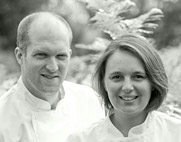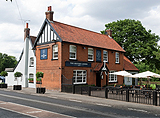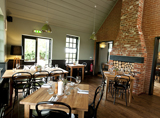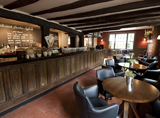The Bakers Blessing by Peter Reinhart
Baking bread used to be something I did but never really understood. After being tutored by Richard Bertinett at his Kitchen on how to make the perfect dough enabled me to find the passion to add to my knowledge.
I came across this video of USA baking legend Peter Reinhart and I must say he confirmed my feelings for baking bread. His passion together with his simplistic and humorous manner of explaining how to make the perfect dough, what happens during the “making” process and all things technical is just simply perfect!
If you have a spare 16 minutes watch this video as it definitely clarified any remaining issues as to why I still sometimes bake bricks! Baking bread is the radical transformation of taking wheat or flour and making it into a tasty loaf, it’s a tricky process and the fate of your loaf lies in your hands. The baker makes the ultimate decisions on which flour or ingredients to use but a small fluctuation in temperature and timing will effect the final outcome of your loaf.
In short you cannot fast track the process and without the true understanding and knowledge it’s a daunting task. Anyone can bake bread but armed with the knowledge and know how, it’s an even more interesting and exciting process.
Peter talks about the 12 stages of bread baking and explains the Bakers Mission of extracting flavour from wheat or flour:
- Mis-en-place – weighing ingredients and getting everything ready
- Mixing – developing the gluten to give the dough the strength to grow and activates the yeast
- Fermentation – developing flavour – this is the stage where the yeast ‘eats’ the sugars and starts to ferment by creating carbon dioxide and alcohol- in Peters words the yeast “burps” and “sweats”
- Dividing – the dough into smaller pieces which makes it easier to handle
- Shaping – Shape the dough into required shapes such as loaves, rolls, sticks etc..
- Resting
- Final Shaping
- Panning – transferring the dough to suitable tins and baking vessel such as baskets, loaf tins or baking trays
- Final Fermentation also known as proving stage
- Baking – Three transformations take place: 1. the sugars caramelise and forms a crust; 2. proteins coagulate at 160°C, this forms the crumb of the loaf; 3. gelatinisation takes place when the dough reaches 180°C, all the moisture is absorbed and the yeast bubbles bursts and all the flavours are transferred to the bread
- Cooling
- Eating!






This is really interesting, sort of pulls together all the things we know and instinctively feel in a rational sequence. Must go as have dough to knead…!
I am in a funk right now – the bread maker is caput, I don’t have enough time to make bread every day by hand and we don’t have a great bakery close by. This is a good kick to get over myself and get baking!
watch this its good
what a great video to share, thank you…such a marvelous view on the simplicity, world over, of eating bread…which has become ‘artisan’ stuff to a lot of us while some of the world sees it as mandatory for survival!!! And it is made the very same way with the very same ingredients! Awesome!
I started baking bread when I moved to a place where the commercially available bread was, for me, too sweet. Every Friday, I bake a loaf for the week ahead and I love experimenting with different types of flours and seeds. My friends like it when I get the “bread bug” as they end up with the results. I don’t think anything smells more delicious than bread prooving and baking, and I love the feel of the dough in my hands. And after a challenging day at work, there’s nothing more therapeutic than making a loaf of bread. I take all my frustrations out on the dough during the kneading and I end up with a spectacular loaf. I can think of no better therapy!